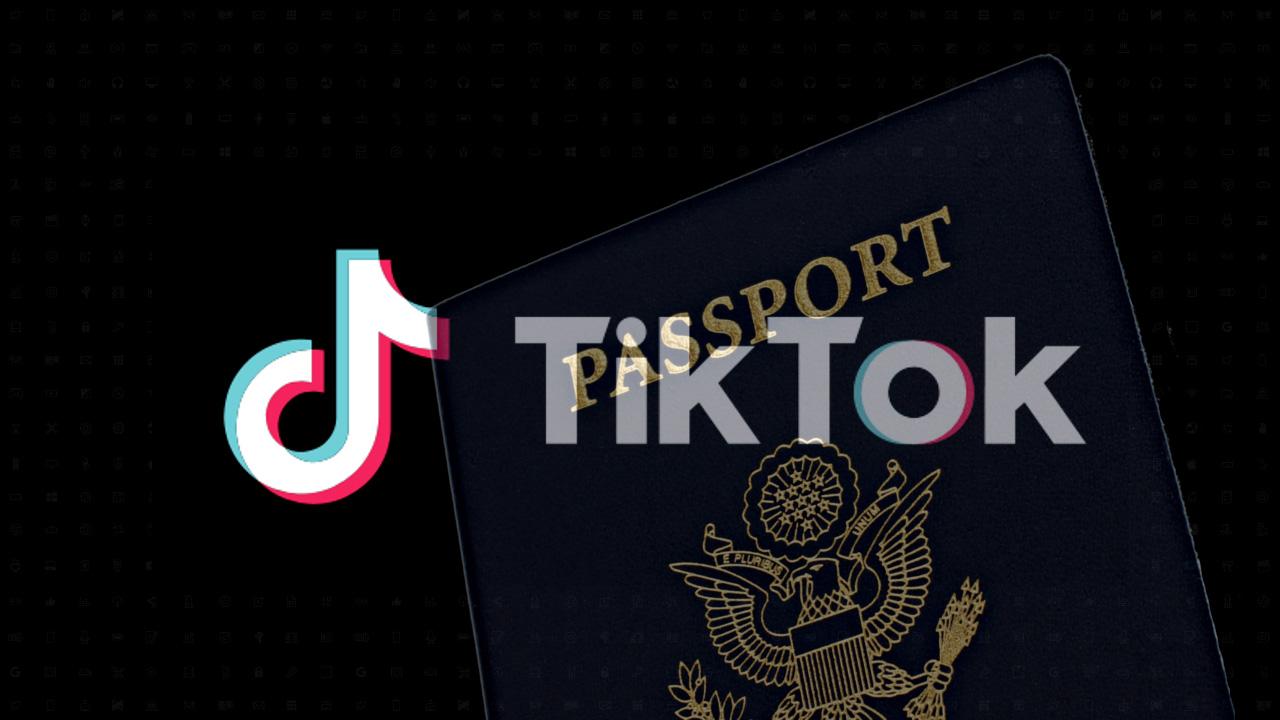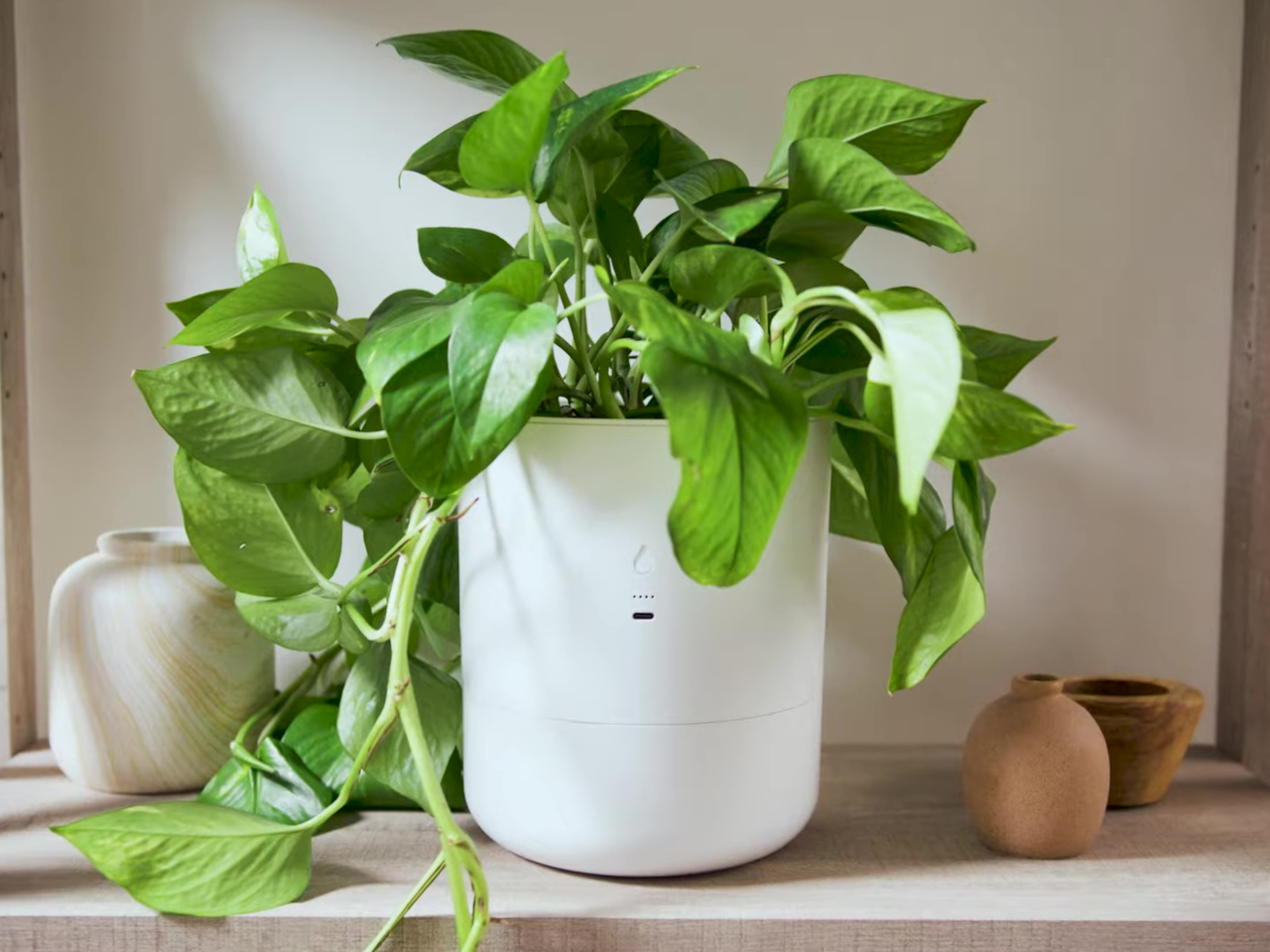Creating Inclusive Classrooms with Co-Teaching and the Station Rotation
This post is a collaboration between Noelle Gutierrez & Catlin Tucker. In today’s educational landscape, the emphasis on inclusion and creating the least restrictive environments for students with Individualized Education Programs (IEPs) has significantly reshaped classroom dynamics. This shift has led to the growing adoption of co-teaching models, where general and special education teachers collaborate […] The post Creating Inclusive Classrooms with Co-Teaching and the Station Rotation appeared first on Dr. Catlin Tucker.

This post is a collaboration between Noelle Gutierrez & Catlin Tucker.
In today’s educational landscape, the emphasis on inclusion and creating the least restrictive environments for students with Individualized Education Programs (IEPs) has significantly reshaped classroom dynamics. This shift has led to the growing adoption of co-teaching models, where general and special education teachers collaborate to meet the diverse needs of their students. Among the various co-teaching approaches, the use of teacher-led stations within a station rotation model stands out for its ability to consistently deliver targeted, differentiated, and personalized instruction.
In this blog, we will explore five strategies to utilize co-teachers in a station rotation model to enhance the co-teaching experience and ensure that all students, including those with IEPs, receive the support they need.
Benefits of Co-Teaching within the Station Rotation Model
Implementing the station rotation model in a co-teaching classroom offers significant benefits. This approach creates an inclusive environment where students of varying abilities can learn together while still receiving the targeted support they need. The model increases opportunities for differentiated and personalized instruction, allowing co-teachers to address the unique needs of each student, including the goals listed on IEPs. By combining the strengths of two educators, the station rotation model ensures that all students receive the individualized, focused instruction necessary for their success. As inclusive practices continue to shape our educational system, the station rotation model stands out as a flexible and effective framework for meeting the diverse needs of students in the least restrictive environment.
Strategy #1: Two Teacher Led-Stations – One Differentiated, One Uniform
Structure: In this co-teaching model, two teacher-led stations are set up, each focusing on a distinct learning task. Students are grouped based on their skill or ability levels and rotate through all the stations. This structure balances differentiated instruction and uniform content delivery, providing personalized support and consistent foundational learning for all students.
- Teacher 1: Provides targeted instruction tailored to each group’s needs, abilities, and skill levels. As students rotate to this station, they receive focused attention and resources that address their unique learning challenges or advanced needs, ensuring that each student is supported where they are in their learning journey.
- Teacher 2: Delivers the same instructional content or activity to all groups, regardless of their skill levels. This uniform approach ensures that every student receives a consistent core experience, reinforcing key concepts and skills across all ability levels. It also allows Teacher 2 to focus on building a solid foundation for all students, ensuring no essential content is missed.
Example: Two Teacher-Led Stations – One Differentiated, One Guided Reading and Discussion
Reading Standard: CCSS.ELA-LITERACY.RL.3.2 – Recount stories, including fables, folktales, and myths from diverse cultures; determine the central message, lesson, or moral and explain how it is conveyed through key details in the text.
Teacher 1: Differentiated Instruction Station
At this station, students are grouped by their reading comprehension levels. Teacher 1 provides targeted instruction based on each group’s needs:
- Group 1 (Below Grade Level): Students work on identifying key details in a simplified fable with additional visual supports. The teacher uses guided reading strategies, asking questions that help students focus on basic elements like characters and setting before discussing the moral.
- Group 2 (At Grade Level): Students read a standard-level folktale and discuss the central message. The teacher uses questioning techniques to encourage students to cite textual evidence supporting their understanding of the story’s moral.
- Group 3 (Above Grade Level): Students read a more complex myth and compare the central message with another story they have read. The teacher challenges these students to think critically about how cultural context influences the story’s moral and provides opportunities for deeper analysis.
Teacher 2: Guided Reading and Discussion Station
In this station, all students participate in a guided reading session, where the teacher facilitates a deep dive into the text. As they read together, the teacher leads a discussion focused on engaging students in speaking and listening, as well as applying a previously introduced reading comprehension strategy:
- Guided Reading: The teacher reads the text aloud or alongside students, pausing at strategic points to ask questions that promote deep thinking and comprehension. This may include predicting what will happen next, making inferences, or connecting the story to their experiences.
- Facilitated Discussion: The teacher encourages students to discuss their thoughts and ideas, prompting them to articulate their understanding and listen to their peers. This discussion deepens their comprehension of the text and enhances their speaking and listening skills.
- Application of a Comprehension Strategy: The teacher revisits a reading comprehension strategy previously introduced, such as summarizing, questioning, or visualizing. Students are guided to apply this strategy as they engage with the text, reinforcing their understanding and ability to use it independently in future reading.
This structure ensures that all students are actively engaged in the reading process, developing their comprehension skills and ability to discuss and articulate their understanding of the text.
Strategy #2: Two Teacher-Led Stations – Both Differentiated
Structure: In this model, two teacher-led stations are set up, each dedicated to a different learning task. Unlike the previous model, both teachers deliver differentiated and targeted instruction tailored to each group’s skills, abilities, and needs. As students rotate through the stations, they benefit from a more personalized learning experience at both stops, ensuring that each group’s unique needs are addressed in multiple small-group instructional sessions.
Roles: Both teachers focus on tailoring their instruction to meet the specific needs of each group. Whether reinforcing foundational skills or challenging advanced learners, they adapt their teaching strategies and materials to provide personalized support at their stations. This dual approach ensures that all students receive consistent, targeted attention, maximizing opportunities for growth and understanding.
Example: Two Teacher-Led Stations – Both Differentiated
Math Standard: CCSS.MATH.CONTENT.7.EE.B.3 – Solve real-life and mathematical problems using numerical and algebraic expressions and equations.
Teacher 1: Introducing a New Concept – Algebraic Expressions
Note: Teacher 1 focuses on introducing a new concept, ensuring that all students, regardless of their starting point, can engage with and understand the new material.
This station is focused on introducing a new concept related to algebraic expressions. The instruction is differentiated based on pre-assessment or diagnostic data.
- Group 1 (Below Grade Level): The teacher introduces the concept of algebraic expressions using concrete examples and visual aids. The focus is on understanding basic terms and how to combine like terms. The teacher gradually builds up to simple expressions that students can manipulate.
- Group 2 (At Grade Level): The teacher introduces algebraic expressions that require students to apply distributive properties and combine like terms. The lesson includes more complex examples, and students are encouraged to practice with guided support, discussing their thought processes as they work.
- Group 3 (Above Grade Level): The teacher introduces more complex algebraic expressions involving multiple variables and more intricate operations. Students are challenged with problems that require them to apply new concepts in novel ways, encouraging higher-order thinking.
Teacher 2: Review and Targeted Support – Homework Review and Intervention
Note: Teacher 2 reinforces and builds on prior knowledge by reviewing homework and providing targeted instruction, ensuring students understand the content before moving on to new material.
This station is focused on reviewing the previous night’s homework, providing targeted instruction and support based on how students performed:
- Group 1 (Below Grade Level): The teacher reviews common mistakes or misunderstandings observed in the homework. The instruction is tailored to re-teach and reinforce fundamental skills needed to complete the homework correctly. Students receive individualized attention to address specific areas of struggle.
- Group 2 (At Grade Level): The teacher guides a discussion about the homework, asking students to explain their reasoning and the steps they took to solve the problems. The teacher addresses areas where students struggle and provides additional practice problems to solidify their understanding.
- Group 3 (Above Grade Level): The teacher reviews the homework, focusing on extending the students’ understanding of concepts. Students discuss alternative methods for solving the problems and explore how the concepts from the homework can be applied to more challenging problems. The teacher introduces enrichment tasks that push students to apply their knowledge in more complex or real-world scenarios.
Strategy #3: One Teacher-Led Station: Rotating Roles
Structure: This model has a single teacher-led station, with students grouped according to skill or ability levels. The focus is on providing targeted instruction to smaller groups while ensuring that other students remain engaged in meaningful, student-centered activities.
Roles:
- Teacher 1: Delivers targeted, small-group instruction tailored to each group’s needs and skills. This focused attention allows for deep, personalized support, addressing individual learning gaps or extending knowledge for advanced learners.
- Teacher 2: Monitors and facilitates student-centered activities for the remaining groups, including online learning modules, independent work, or collaborative work. Teacher 2 ensures that these groups stay on task, provides support as needed, and fosters an environment conducive to self-directed learning.
- Role Rotation: During the session, Teachers 1 and 2 switch roles. This rotation allows both teachers to engage with all students, offering diverse perspectives and instructional styles while ensuring that every group benefits from direct teacher support and guidance.
Example: One Teacher-Led Station – Rotating Roles
Science Standard: NGSS.MS-PS1-2 – Analyze and interpret data on the properties of substances before and after they interact to determine if a chemical reaction has occurred.
Teacher 1: Reviewing a Scientific Process
At this station, the teacher reviews the process of identifying and analyzing chemical reactions. The instruction is tailored to meet the needs of each group based on their understanding and skills:
- Group 1 (Below Grade Level): The teacher reinforces the basic concepts of chemical reactions, including identifying reactants and products. The teacher uses simple, concrete examples and visual aids to help students grasp the changes in properties that indicate a chemical reaction. Students engage in a guided practice where they observe a reaction and discuss the changes they see.
- Group 2 (At Grade Level): The teacher reviews the process of analyzing data from chemical reactions, emphasizing the interpretation of data sets that show changes in physical properties. Students work through examples where they compare data before and after a reaction to determine if a chemical change has occurred, with the teacher providing targeted support and feedback.
- Group 3 (Above Grade Level): The teacher challenges students to analyze more complex chemical reactions, including those that may involve subtle or less apparent changes in properties. Students are encouraged to predict the outcomes of reactions based on the data provided and to justify their conclusions with evidence from the data. The teacher facilitates a discussion that deepens their understanding of interpreting complex data sets.
Teacher 2: Circulating Support Role
While Teacher 1 works with the small group, Teacher 2 circulates among the other student groups to provide support and monitor progress. The students not at the teacher-led station are engaged in meaningful, student-centered activities:
- Designing a Lab or Experiment: Some students are tasked with designing their experiments to test a hypothesis related to chemical reactions. Teacher 2 circulates to offer guidance, helping students refine their experimental designs, ensure they follow scientific protocols, and think critically about the variables and controls in their experiments. Teacher 2 might also provide feedback on their data collection methods and help troubleshoot any issues during the planning phase.
- Reciprocal Teaching with a Scientific Article: Another group of students is engaged in a reciprocal teaching activity, reading and discussing a scientific article related to chemical reactions. Teacher 2 supports this group by facilitating discussions, helping students connect the article’s content with their prior knowledge, and prompting deeper analysis of the data sets presented. Teacher 2 can also encourage students to ask questions, clarify misconceptions, and draw connections between the article and the experiments they are designing.
- Data Analysis and Interpretation: A third group may be analyzing data from previous experiments. Teacher 2 can assist by guiding students as they interpret the data, helping them recognize patterns, draw conclusions, and consider the implications of their findings. Teacher 2 might also challenge students to think about alternative explanations or consider how their data could be used to support or refute a hypothesis.
Role Rotation: During the session, Teacher 1 and Teacher 2 can rotate roles, allowing both teachers to facilitate a teacher-led station and interact with the other students. This rotation allows each teacher to leverage their strengths. For instance, one teacher might be more comfortable or effective supporting below-grade-level students, while the other might excel with above-grade-level students. This flexibility also helps keep the lesson dynamic for the teachers so they are not engaged in the same activity for the entire class period, which can enhance engagement and effectiveness.
This structure allows students to engage deeply with the material through direct instruction and collaborative, student-centered activities, supporting their understanding of chemical reactions and data analysis in science.
Strategy #4: Divided Teacher-Led Station: Mixed Ability Groups or Ability Level Groups
Structure: This model features a single teacher-led station divided into two smaller groups within the station. Students can be grouped by mixed ability or similar ability levels, depending on the instructional goals and specific needs.
Roles: Students are divided into two smaller groups at the teacher-led station based on their specific needs. Both teachers then provide targeted, differentiated instruction tailored to each group’s skill levels or abilities. Whether working with mixed-ability groups to encourage peer learning and collaboration or with ability-level groups for more focused support, the teachers ensure that each student receives instruction that meets them where they are in their learning journey.
Example: Writing Standard: CCSS.ELA-LITERACY.W.7.1 – Write arguments to support claims with clear reasons and relevant evidence.
Note: The teachers divide the group based on their needs. Teacher 1 works with subgroup 1, focusing on foundational skills like thesis development, organizing evidence, and drafting paragraphs. The teacher provides more direct support and scaffolding, ensuring all students can build a strong foundation in argumentative writing. Teacher 2 works with subgroup 2, focusing on more advanced writing skills such as integrating counterarguments, analyzing evidence, and refining writing style.
At this station, students are divided into two smaller groups, organized by mixed abilities to promote peer collaboration or by similar ability levels for more focused instruction. Each group receives targeted support in writing argumentative essays, with the instruction tailored to their specific needs.
Teacher-led Station Pod 1 (Mixed Ability or Below Grade Level):
Students in this group may struggle with the foundational aspects of writing an argumentative essay, such as forming a clear thesis or organizing their evidence. The teacher provides a structured approach:
- Thesis Development: The teacher guides students through crafting a strong, clear thesis statement, using examples and sentence starters to support those who need it. Peer collaboration is encouraged in mixed-ability groups, where stronger writers can help their peers refine their ideas.
- Organizing Evidence: The teacher helps students organize their evidence logically, using graphic organizers to map out their arguments. In mixed-ability groups, students can work together to categorize evidence, with more confident students leading the discussion while others contribute ideas.
- Writing Support: The teacher provides scaffolding as students begin drafting their essays, offering sentence frames and transitional phrases to help them build coherent paragraphs. In mixed-ability groups, peer review is incorporated, allowing students to give and receive feedback, fostering a collaborative learning environment.
Teacher-led Station Pod 2 (Mixed Ability or At/Above Grade Level):
Students in this group may be ready for more advanced tasks, such as refining their arguments, integrating counterarguments, or enhancing their writing style. The teacher offers a more challenging approach:
- Counterarguments: The teacher focuses on helping students develop and integrate counterarguments into their essays. Students work on identifying potential counterarguments and crafting rebuttals that strengthen their original claims. In mixed-ability groups, peer discussions are encouraged to explore different perspectives and refine arguments.
- Evidence Analysis: The teacher guides students in analyzing the quality and relevance of their evidence, encouraging them to select the most compelling pieces to support their claims. In mixed-ability groups, students can work together to evaluate and discuss their evidence, with higher-level students leading the analysis.
- Style and Voice: For students ready to elevate their writing, the teacher provides mini-lessons on refining their style and voice. This may include varying sentence structure, using precise language, and incorporating rhetorical devices to enhance their arguments. In mixed-ability groups, peer feedback is used to help students identify areas where their writing could be more impactful.
Strategy #5: One Teacher-Led Station with Individualized Support
Structure: In this co-teaching model, one teacher leads a teacher-led station, where students are grouped by mixed ability levels or similar skill levels, depending on the instructional goals. This station allows for small-group instruction that can be tailored to the needs of each group. Meanwhile, the co-teacher pulls individual students from the other activities for personalized instruction, reteaching, or intervention as needed. This approach ensures that all students receive group-based and individualized support, catering to their unique learning needs.
Teacher 1: Facilitates the teacher-led station, delivering focused, small-group instruction that can be either mixed skill level or skill level-specific. This allows for targeted teaching, whether reinforcing core concepts for diverse learners or advancing students’ skills with similar abilities. The teacher adjusts the instruction based on the group’s needs, providing dynamic and responsive support.
Teacher 2: Provides individualized support by pulling students for one-on-one instruction, reteaching, or intervention. This role allows the co-teacher to address specific learning gaps, extend understanding for students who need more challenge, or offer immediate feedback and guidance to those who need extra help. This strategy ensures that no student falls behind and that each learner receives the attention necessary for their academic growth.
Example: Example for Literacy Strategy – Teacher-Led Station with Individualized Support and Tier 2/3 Interventions
Literacy Standard: CCSS.ELA-LITERACY.RF.5.4 – Read with sufficient accuracy and fluency to support comprehension.
Teacher-Led Station Structure:
In this model, students are grouped by mixed ability levels or similar skill levels at the teacher-led station. The focus is on small-group instruction tailored to the group’s specific needs. At the same time, the co-teacher provides individualized support, including targeted Tier 2 or Tier 3 interventions, to ensure all students receive the assistance they need.
Teacher 1: Small Group Instruction Station
Teacher 1 provides focused, small-group instruction at this station with mixed or skill-level groupings.
- Group 1 (Mixed Ability): The teacher focuses on fluency and comprehension strategies by engaging students in choral reading and guided practice with a shared text. Mixed-ability grouping allows stronger readers to model fluent reading for their peers while the teacher provides immediate feedback and support to students struggling with accuracy or expression.
- Group 2 (Similar Skill Level—Below Grade Level): The teacher focuses on foundational reading skills, such as decoding and word recognition, to build fluency. The group practices with leveled texts appropriate for their reading abilities, and the teacher provides scaffolding to help students improve their accuracy and speed.
- Group 3 (Similar Skill Level – Above Grade Level): The teacher challenges students with more complex texts that require higher-level comprehension skills. The group discusses the text, focusing on making inferences, summarizing, and identifying themes. The teacher encourages these students to think critically and deepen their understanding of the material.
Teacher 2: Individualized Support and Tier 2/3 Interventions
While Teacher 1 leads the small-group instruction, Teacher 2 pulls individual students from the other activities for personalized support. This role is critical for addressing specific learning needs through one-on-one instruction, reteaching, or intervention:
- Tier 2 Intervention: For students who need additional support beyond the general classroom instruction but are not at risk of significant reading difficulties, Teacher 2 provides targeted interventions. This might include working with a student on fluency exercises, such as repeated readings of a text to build accuracy and speed or focused comprehension activities to improve understanding of the text.
- Tier 3 Intervention: For students who are at risk of significant reading difficulties and require more intensive support, Teacher 2 offers individualized interventions. This could involve explicit phonics instruction for students struggling with decoding or one-on-one sessions to address severe comprehension deficits. These interventions are tailored to the student’s specific needs and monitor progress closely to adjust instruction as necessary.
- Reteaching or Enrichment: Teacher 2 also uses this time to reteach concepts that individual students struggled with during previous lessons or to extend learning for those who need more challenging material. This ensures that every student receives the personalized attention necessary to progress regardless of their starting point.
Additional Tips
- Co-teaching is much like a partnership; it requires practice, patience, and mutual respect. While one teacher may be the official teacher of record, it’s crucial that both educators actively contribute to lesson design and planning. Collaboration is vital to creating a cohesive and effective co-teaching environment.
- Co-teachers can use the teacher-led station to measure students’ progress on their IEP goals.
- Additionally, teachers can use formative assessments to group students by skill or ability level for station rotations. This approach ensures that each student receives instruction tailored to their current needs, maximizing the effectiveness of the station rotation model.
Wrap Up
Although co-teaching is not a new education practice, the current movement to provide more opportunities to students with disabilities in the least restrictive environment has gained momentum because of its benefits for students with disabilities and those without. When combined with the station rotation model, the co-teaching partnership is a powerful tool for creating a differentiated and personalized learning environment where every student can learn and thrive. All five teacher-led station strategies outlined above ensure that each student receives the instruction and support they need while promoting an inclusive and supportive educational environment.
The post Creating Inclusive Classrooms with Co-Teaching and the Station Rotation appeared first on Dr. Catlin Tucker.




































/cdn.vox-cdn.com/uploads/chorus_asset/file/24435316/STK150_Bing_AI_Chatbot_02.jpg)










![United Passenger’s Upgrade Mishap Sparks Seat Loss—Here’s the Critical Step to Avoid It [Roundup]](https://viewfromthewing.com/wp-content/uploads/2018/09/20170607_112204.jpg?#)

































